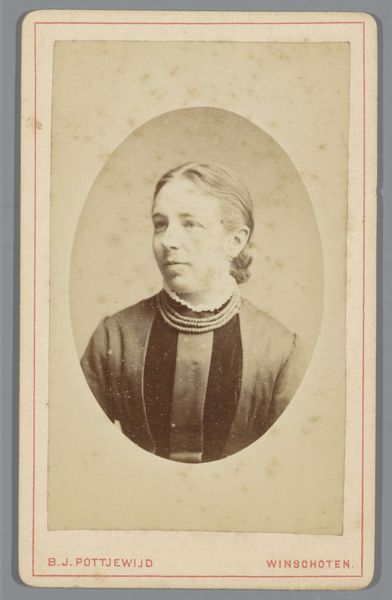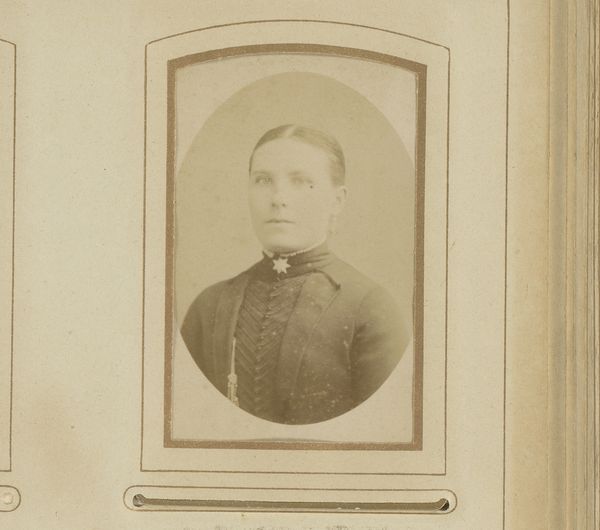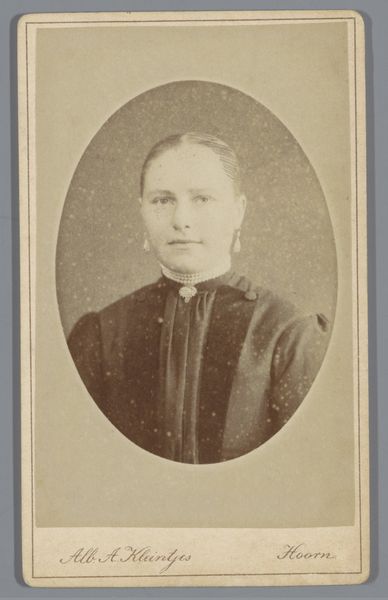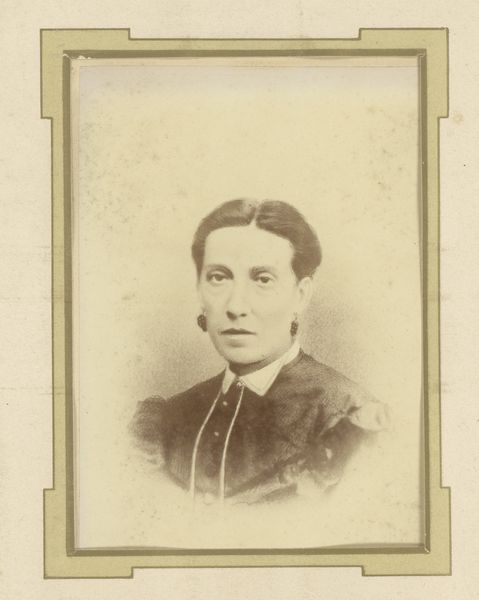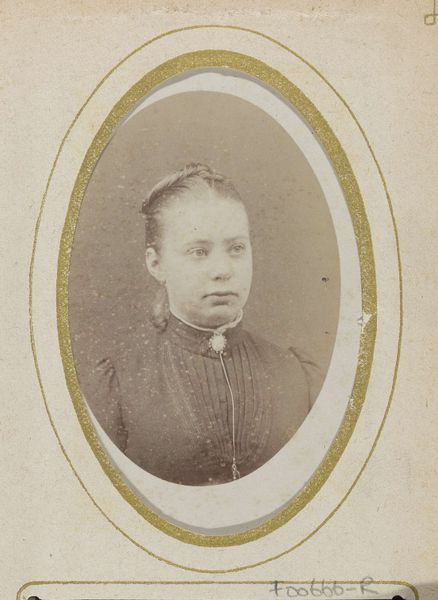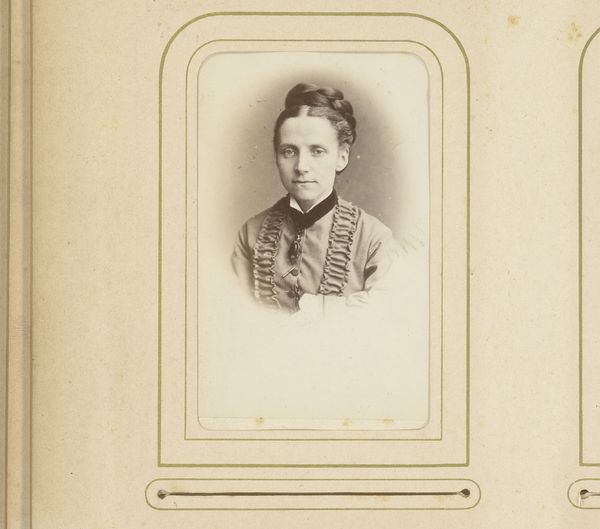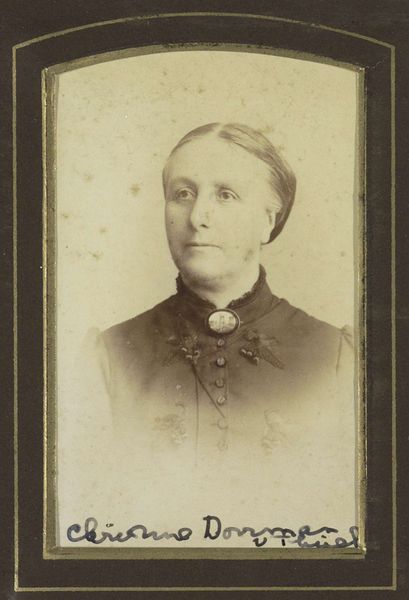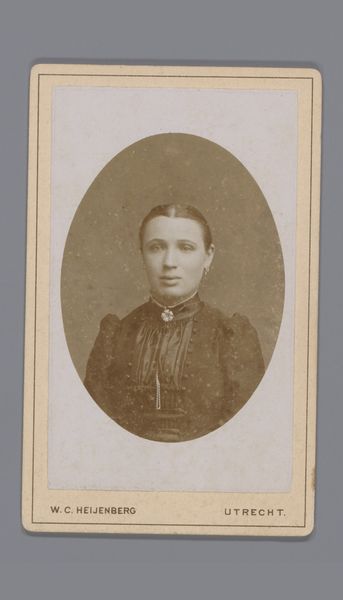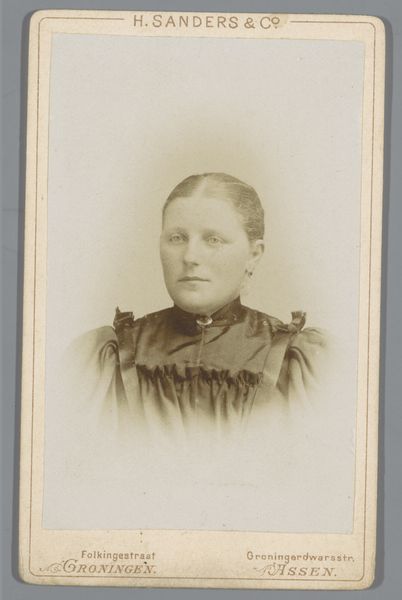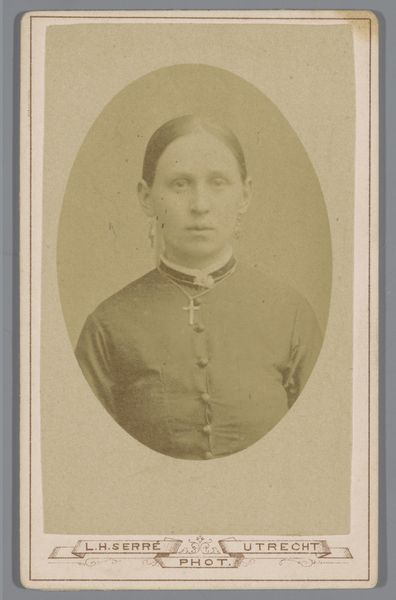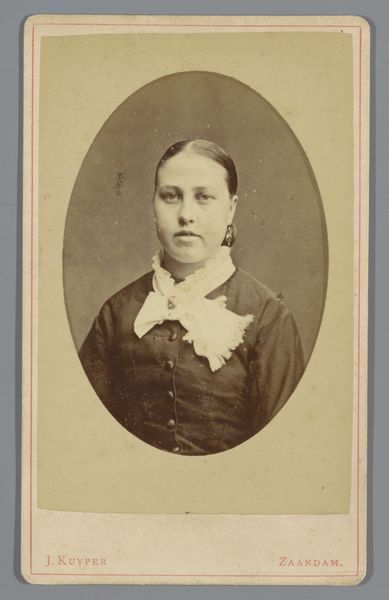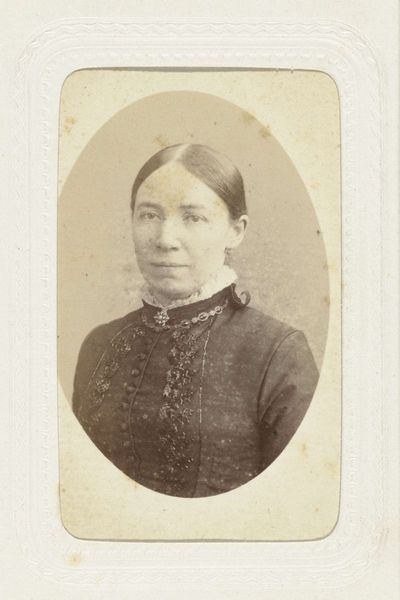
photography, gelatin-silver-print, albumen-print
#
portrait
#
photography
#
portrait reference
#
gelatin-silver-print
#
albumen-print
#
realism
Dimensions: height 91 mm, width 57 mm, height 102 mm, width 62 mm
Copyright: Rijks Museum: Open Domain
Editor: This gelatin-silver print, "Portrait of a Woman with a Collar and Necklace" by J.H. Anderson, dating from around 1860 to 1900, possesses a captivating stillness. The subject's gaze is intense, almost confrontational. How do you interpret this work? Curator: Considering this portrait within its historical context allows us to delve into the socio-political sphere surrounding women in the 19th century. The albumen print speaks to the rising prominence of photography as a medium accessible to the middle class, while the subject’s demure dress and contained hairstyle present a picture of constrained femininity. I wonder, do you consider this an accurate representation, or perhaps, a carefully constructed performance for the camera? Editor: That’s interesting! It does feel posed, but there’s something in her expression that suggests more complexity. Perhaps a quiet rebellion against those very constraints? Curator: Exactly. Looking at the necklace and lace collar, it subtly indicates her position and respectability but do those symbols allow for an expression of individuality, or do they force a further reduction of identity and a stricter control? Does she use clothing as a medium for empowerment, as an entry into a world beyond the domestic space? Or, conversely, does she subtly reject the prevailing conventions of beauty and female presentation of the period? How do we reconcile these competing narratives? Editor: I hadn't considered the multiple possibilities within those details. I guess I see the piece differently now – a layered narrative instead of a straightforward portrait. Curator: Precisely, it is about opening those lines of inquiry, using history and social constructs to enrich your reading. There’s always more to discover, looking beyond the surface.
Comments
No comments
Be the first to comment and join the conversation on the ultimate creative platform.
